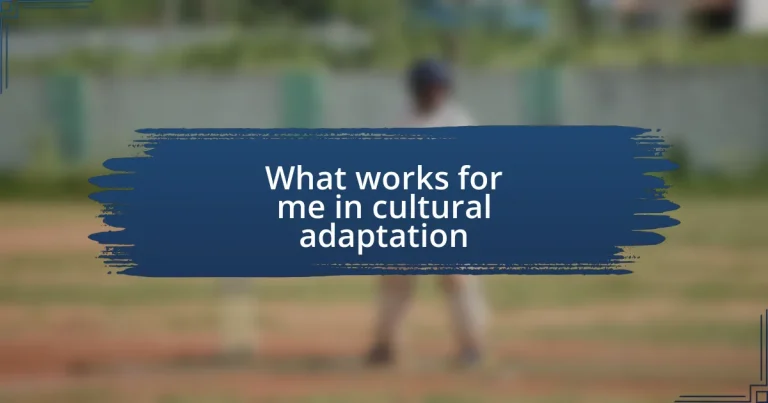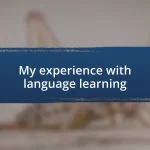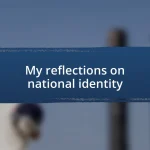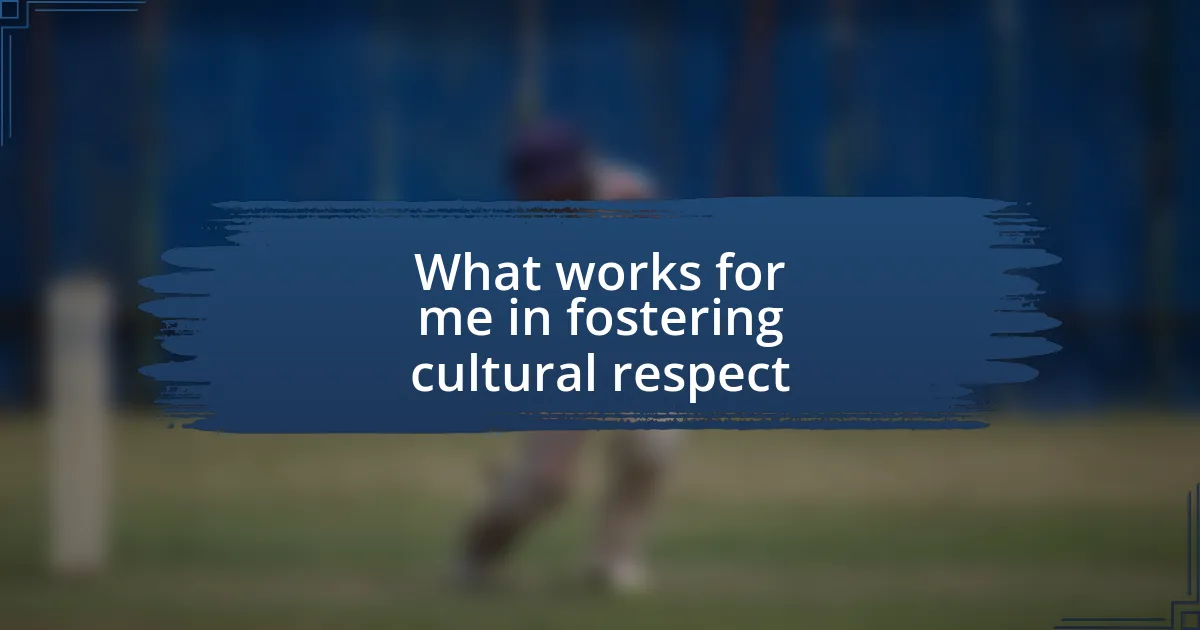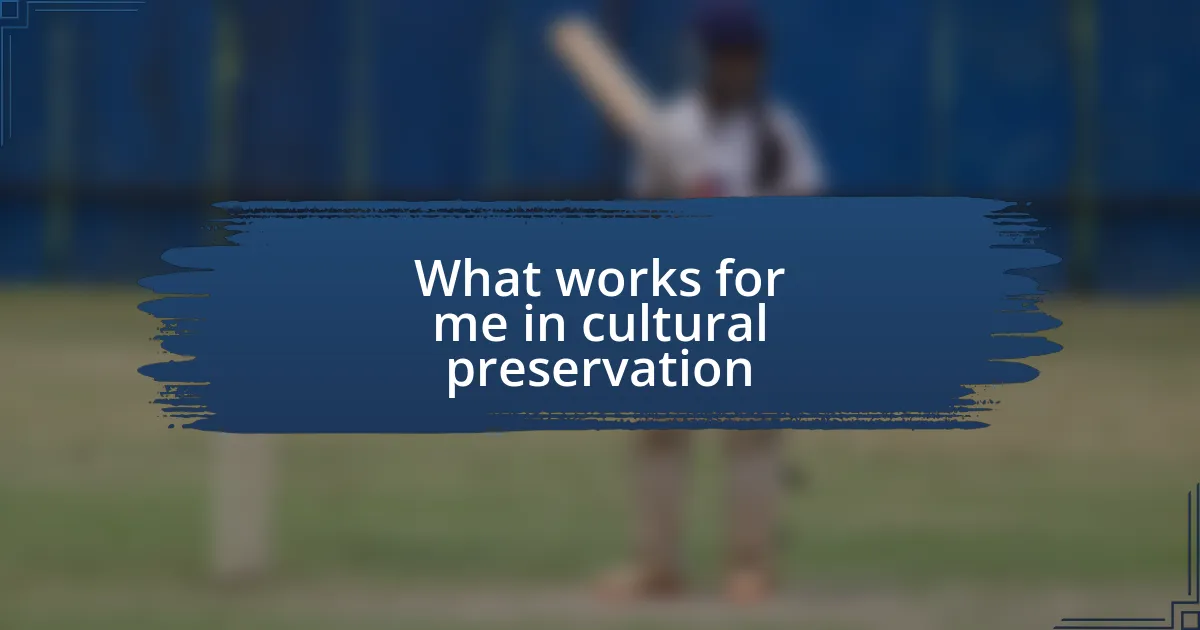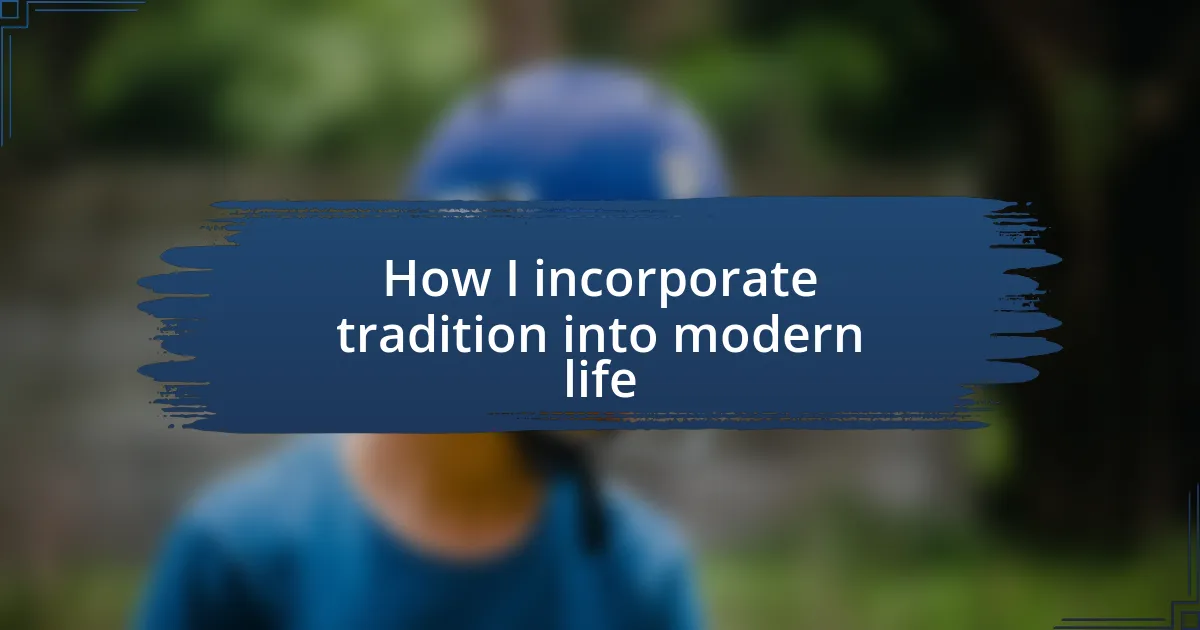Key takeaways:
- Cultural adaptation involves emotional journeys, fostering personal growth through connection and engagement with local customs.
- Cultural awareness enhances empathy, communication, and relationships in diverse environments, leading to mutual respect and collaboration.
- Effective adaptation strategies include active engagement, learning local languages, seeking mentorship, and practicing patience through discomfort.
- Continuous learning and flexibility promote deeper connections and understanding, transforming challenges into valuable learning experiences.
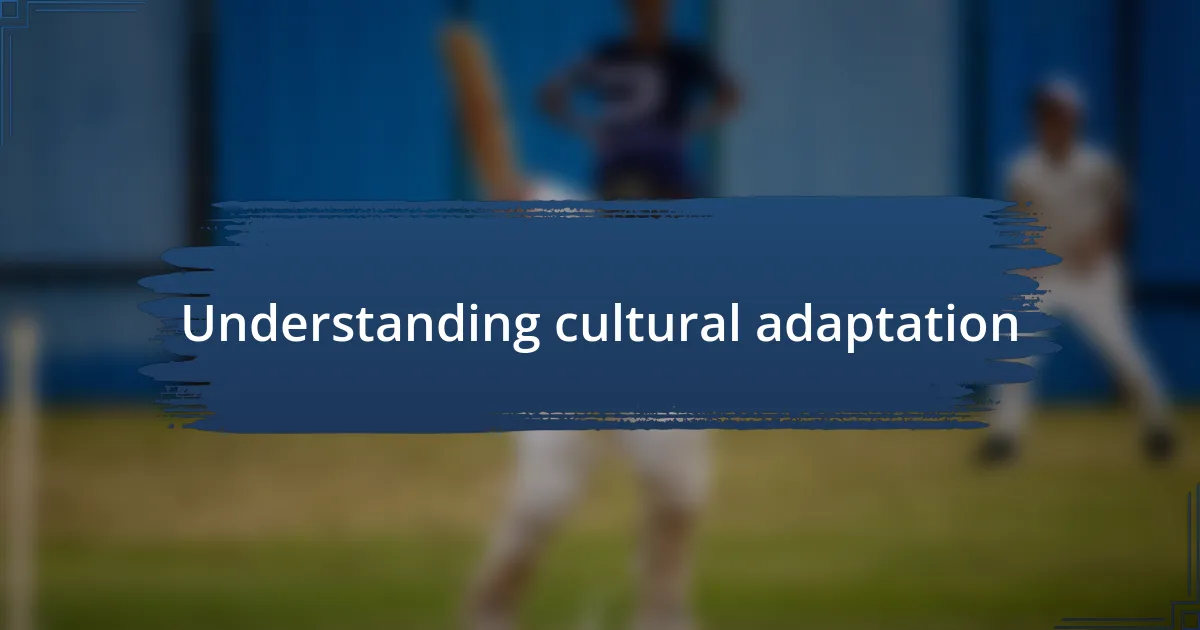
Understanding cultural adaptation
Cultural adaptation is the process through which individuals adjust and integrate into a new culture, blending their own traditions with those they encounter. I still remember moving to a new country and experiencing the overwhelming sensation of sitting in a café filled with local customs I barely understood. Have you ever felt lost in a sea of unfamiliar faces and practices? It’s both daunting and exhilarating.
When I first faced local traditions, I realized that cultural adaptation isn’t just about changing your behavior; it’s about reshaping your perspective. I vividly recall attending a festival where I was encouraged to join in communal rituals, and it struck me how these moments foster connection. Isn’t it interesting how stepping outside our comfort zones often leads to the most profound personal growth?
Understanding cultural adaptation means recognizing the emotional journey involved. At times, I felt a sense of isolation, but those moments were often met with rich rewards when I embraced the culture. Have you pondered how your own experiences might broaden your worldview? It’s in these encounters that we find empathy and appreciation for the diverse tapestry of life that surrounds us.
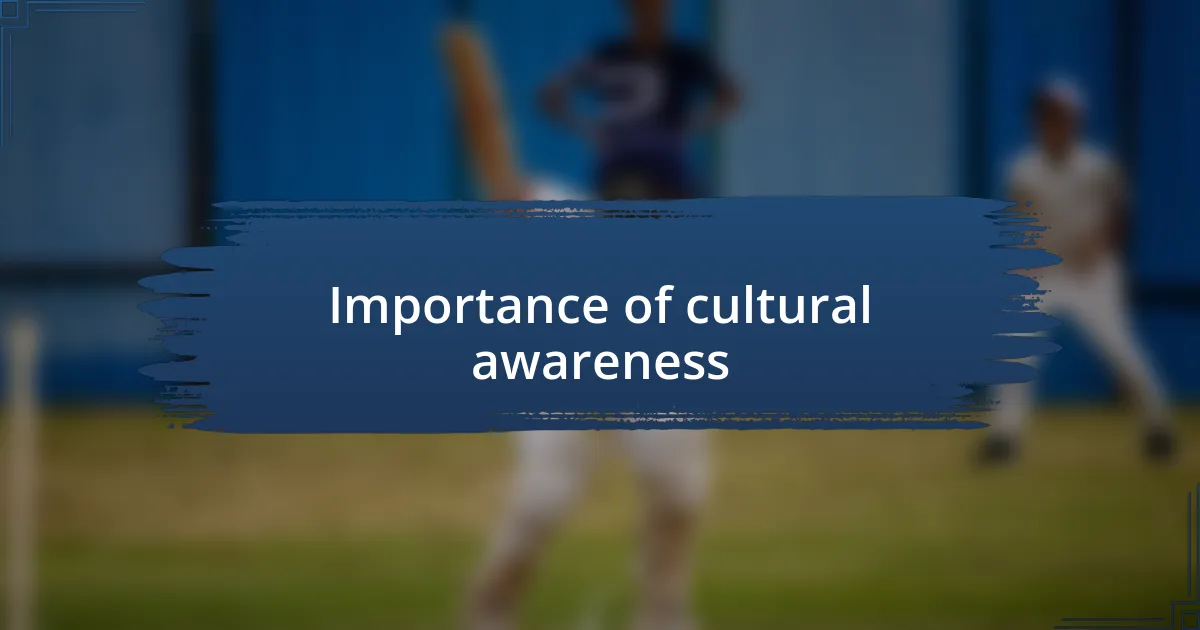
Importance of cultural awareness
Cultural awareness is vital in today’s interconnected world. It not only enriches our experiences but also fosters respect and understanding among diverse groups. I recall the first time I tried navigating a multicultural workplace; the nuances of communication were eye-opening. I discovered that humor and directness varied significantly across cultures, and missteps could lead to misunderstandings. Have you ever considered how a small gesture, like a greeting or an opinion on a topic, can carry different meanings based on cultural backgrounds?
- Increases empathy by allowing us to see situations from different viewpoints.
- Enhances communication, reducing the chances of conflict.
- Encourages collaboration, leading to innovative solutions.
- Builds stronger relationships grounded in mutual respect.
- Fosters inclusivity, making everyone feel valued and heard.
Understanding these aspects makes me realize how cultural awareness can transform our interactions. One day, during a team meeting, a colleague from another culture shared a different approach to problem-solving. This inspired me to rethink my own strategies and embrace a collaborative spirit. Have you ever encountered a moment where acknowledging cultural differences led to unexpected insights? Each experience like this reinforces the notion that cultural awareness is essential for personal and professional growth.
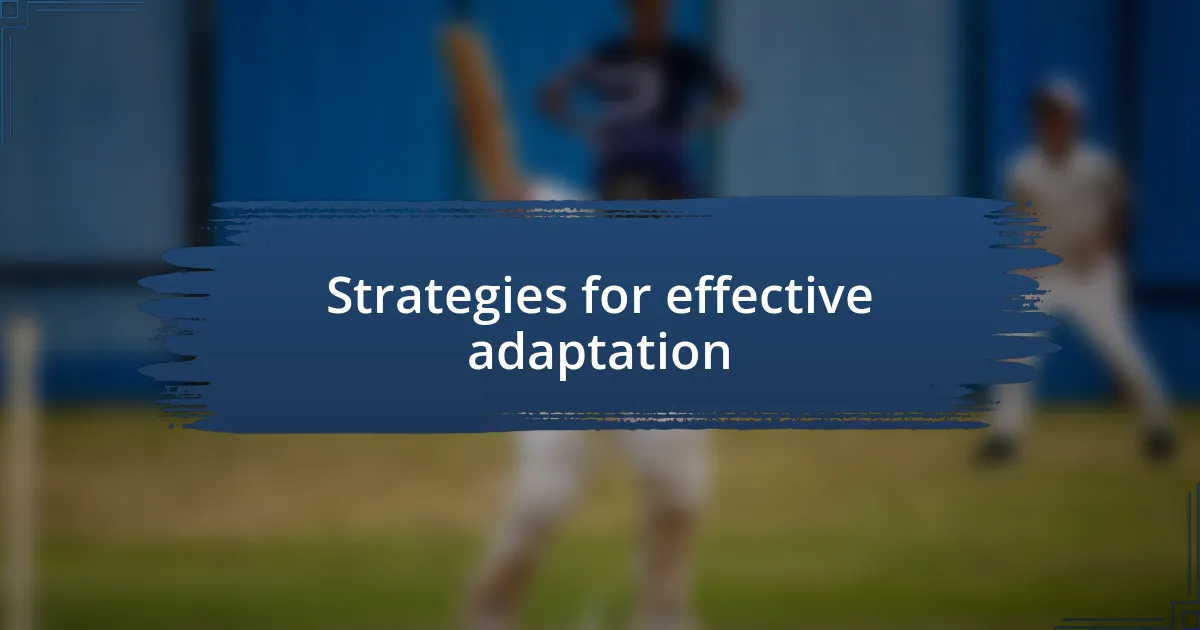
Strategies for effective adaptation
Strategies for effective adaptation often revolve around openness and flexibility. One approach that has worked for me is to actively engage with local customs and practices. For instance, when moving to a new country, I made an effort to learn a few basic phrases in the local language. This not only helped me communicate but also demonstrated my willingness to embrace the culture. Have you ever felt the warmth of a simple hello in someone’s native language? It creates an instant connection.
Another effective strategy is to seek out cultural mentors or communities. In my experience, joining local groups or attending cultural events has been invaluable. I remember attending a regional festival where I learned traditional dances and shared meals with locals. It broke down barriers and allowed me to experience culture from the inside out. The conversations I had during that festival opened my eyes to numerous perspectives that I had not considered before. What has been your experience with connecting to a new culture?
Finally, practicing patience during the adaptation process is crucial. I’ve found that embracing discomfort is part of the journey. There were moments when I felt out of my element, but those feelings often led to the most profound learning experiences. Instead of shying away from awkward moments, I leaned into them and discovered valuable lessons about resilience and empathy. What might you learn from a challenging situation in a new culture?
| Strategy | Description |
|---|---|
| Engagement with Local Customs | Learn local languages and customs to foster connections. |
| Cultural Mentorship | Join community groups or attend cultural events for deeper understanding. |
| Patience and Resilience | Embrace awkwardness to learn and grow through challenges. |
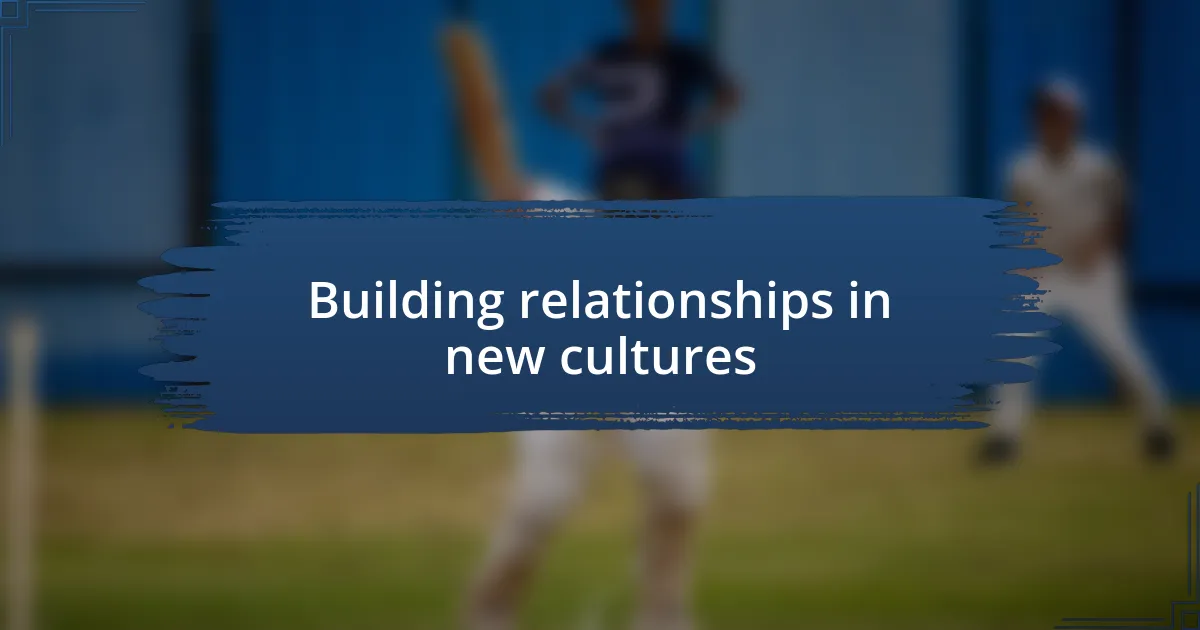
Building relationships in new cultures
Building relationships in new cultures is often rooted in shared experiences. When I first arrived in a foreign country, I remember navigating a local market. The vibrant colors and scents were overwhelming, yet the warm smiles from shopkeepers drew me in. I found that pausing to ask questions not only led to great conversations but also formed genuine connections. Isn’t it fascinating how a simple exchange can lead to unexpected friendships?
Listening actively is another crucial aspect of relationship-building. I recall a time when I was invited to a dinner with local families. As they shared their stories, I made it a point to truly listen, asking questions that reflected my curiosity. This practice of engagement opened doors to deeper insights about their lives and culture. Have you ever noticed how when someone feels heard, it changes the entire dynamic of the interaction?
Moreover, showing appreciation for cultural differences can significantly strengthen bonds. I once attended a cultural exchange event where we showcased our traditional foods. By complimenting the flavors and expressing genuine interest in their recipes, I could see eyes light up with pride. This moment reminded me that we all long to feel valued and understood. What would happen if we took the time to celebrate each other’s unique backgrounds?
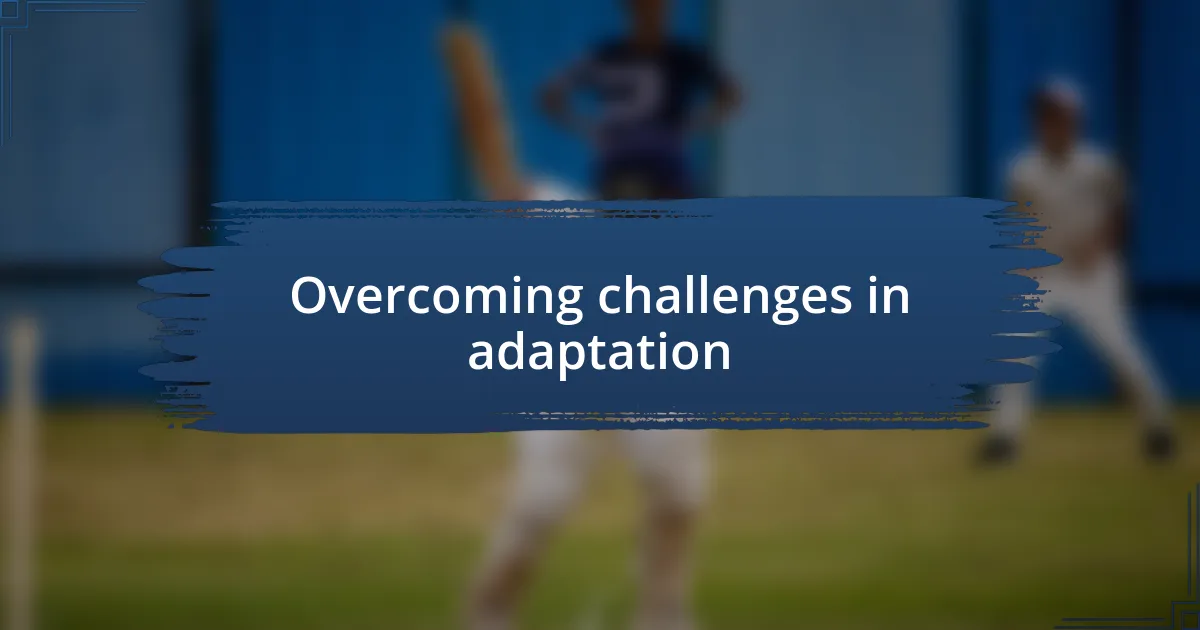
Overcoming challenges in adaptation
Overcoming challenges in cultural adaptation is often about embracing discomfort and uncertainty. I remember attending a community event where I felt out of place, struggling to keep up with conversations full of local slang. It was daunting at first, but the experience taught me to laugh at my mistakes. Have you ever thought about how our missteps can be stepping stones to personal growth?
A significant hurdle is the fear of making cultural faux pas, which can lead to hesitation in engaging with others. I faced this when I inadvertently misunderstood a gesture that was meant to be welcoming. Instead of retreating in embarrassment, I chose to address it directly with my new friends. The laughter that followed not only alleviated my discomfort but also deepened our relationship. Isn’t it curious how vulnerability can invite connection and understanding?
Developing resilience in the face of adaptation challenges can shift our perspective entirely. I found that keeping a journal helped me document and reflect on my experiences. When I reread my entries, I realized that every weekly struggle turned into a lesson in patience and empathy. What if we all took the time to reflect on our journey? Recognizing our growth can be incredibly empowering and promote a more profound appreciation for the cultures we’re navigating.
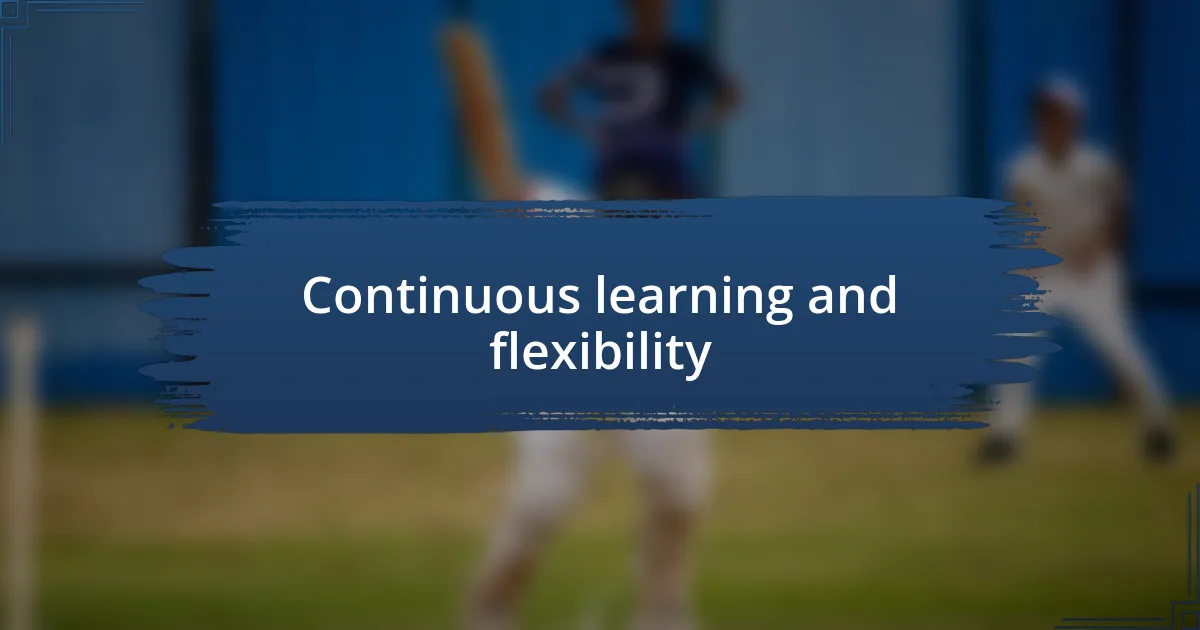
Continuous learning and flexibility
Embracing continuous learning has been a game changer for me in adapting to new cultures. I recall a time when I stumbled upon a cooking class that focused on traditional local dishes. Not only did I gain culinary skills, but I also learned valuable cultural nuances while sharing stories with fellow participants. Have you ever realized how practical experiences can create connections that textbooks simply can’t?
Flexibility, on the other hand, has taught me to roll with the punches. I remember attending a festival that was completely different from what I expected. Instead of sticking to my original plan, I adapted and joined a spontaneous dance circle. The joy and laughter I experienced there opened my eyes to a side of the culture that I would have missed with a rigid mindset. How often do we restrict ourselves by sticking to the familiar?
The beauty of continuous learning and flexibility lies in how they intertwine. When I mistakenly misunderstood a local custom during a gathering, I took it as an opportunity to ask questions rather than shy away. This approach has not only enhanced my cultural understanding but also sparked engaging conversations that enriched my experience. Isn’t it fascinating how our willingness to learn can forge deeper connections?

Evaluating your adaptation process
Reflecting on my adaptation process has often revealed valuable insights. I remember when I first moved to a new country; I felt overwhelmed by the multitude of customs and social cues. One day, I took a moment to jot down my observations and feelings. This simple act not only clarified my struggles but also highlighted areas where I was making progress. Have you ever paused to ponder your journey? It can be eye-opening.
Assessing my experiences helped me identify which strategies were effective and which weren’t. For instance, I initially tried to connect with locals through language exchange meetups, but I found that volunteer work yielded deeper relationships. Each interaction allowed me to evaluate my choices and adapt my approach accordingly, fostering a sense of belonging. Doesn’t it make sense to continuously assess what truly resonates with us?
I also learned that self-evaluation isn’t just about celebrating successes; it’s also about acknowledging setbacks. There were moments when I felt isolated, particularly during cultural holidays when everyone seemed to group together. Instead of becoming discouraged, these feelings pushed me to seek out new connections. How do you handle feelings of isolation? Quite often, it’s through such struggles that we cultivate resilience and develop a richer understanding of our new environment.
